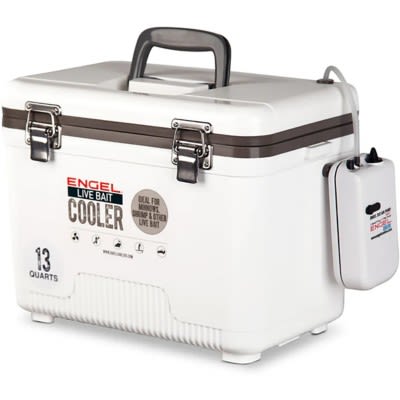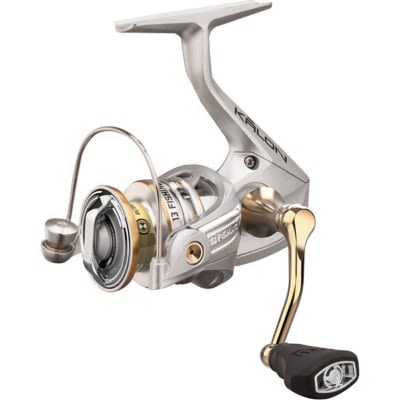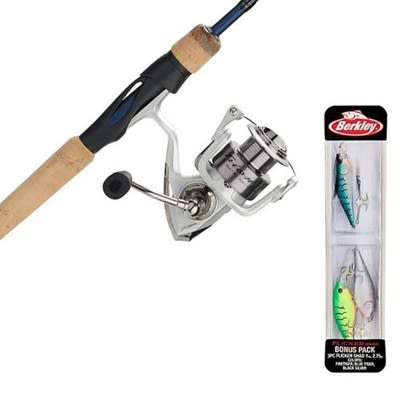WI DNR CWD Response plan and objectives are open to public input. They will also be discussed at County CDAC meetings in January. This caught my eye, from the response plan, especially the last goal.
Anticipated Results by 2025
?
There is a statewide ban on baiting and
feeding.
?
The number of preventable escapes and
number of animals per escape from cervid
farms is minimized as much as possible.
?
The time elapsed from notification of an
escape event until the joint DNR/DATCP
action to remove the escaped cervids from
the landscape is reduced.
?
Farms with CWD-positive animals
are depopulated, secured, and
decontaminated quickly.
?
The DNR has fencing authority over farms
of all cervid species and over farms that
have been depopulated.
?
Depopulated CWD-positive farms are
secured against the ingress of wild cervids
until, using the best science available, it
is determined that those premises are no
longer high-risk sources of CWD-causing
prions.
?
Hunters throughout the state are aware
of the importance of proper disposal
of butcher waste and carcass parts and
options for proper disposal are readily
available.
?
High-risk parts of wild cervids are not
being moved from CWD affected areas.
?
There is significant progress in bringing
statewide deer populations closer to
ecologically sound population levels.
Wisconsin Hunting Reports/Discussion
WI DNR CWD response plan proposal
The judge was in Washington DC. The problem with the ESA is the how vaguely worded it is. I don't have the exact verbiage in front of me it's something like "a particular species has to be no longer in danger of extinction in all or a significant portion of its range" to be considered for delisting. Now with wolves this could mean their historic range, which is most of the country. The people filing lawsuits then file in districts where chances of drawing a like minded judge to use this vague wording to get a favorable ruling, which is what we saw a few years ago. Now you here rumblings of attempts to list moose without regards to their status in Canada. Overall the ESA has been a success (wolves, eagles, etc) but changes are needed to make it more difficult for the animal rights crowd to circumvent science with the courts.
All of that criticism of the midwest states' management plans occurred during the first attempt to delist wolves. Once the plans (which, yes, were highly praised by peers in the field) were in place, the USFWS delisted them. Then we had the brief period where the states could begin to implement their plans. This latest re-listing was made by a federal judge (in Chicago, I think) who was convinced that unless the wolves had recolonized ALL of the midwestern states that still hold some potential for a recovery, then they still needed protection everywhere in the midwest. Using that logic, the quickest way to get them delisted would be to trap, transport, and stock in these other states, much the way WI is doing with elk. Anyone think that is gonna happen? The states that don't have them are just fine with not having them. So, that pitiful judge expects them to slowly creep across the landscape into Iowa, Illinois, and Indiana while we just sit back and watch.
However, none of this wolf crap has anything to do with CWD, much to the contrary of what faroutbadger seems to believe. Nor does the "overbrowse issue", nor even the fawn predation issue. The CWD plan is simply trying to determine how to spend the meager $$$ available to allocate toward fighting the disease. Some still believe there is a chance to eliminate or slow its spread. I can't speak for the wildlife biologists, but I believe their lack of arm-waving and bell-ringing suggests that they believe stopping it is no longer an option. I would suggest that the only reason the plan is being updated is that a couple of legislators got in Scott Walker's face last year and said something more needs to be done. That's the way it works these days - the legislators are the ones deciding natural resource policy, not the DNR. Anyway, I posted my thoughts on CWD previously - they haven't changed.
Faroutbadger, you can say whatever you want, apparently over and over and over. I don't think many people believe or listen to you, and so you shout it ever more loudly. I am glad that people like madforlabs and beertown and others actually take the time to get informed about issues instead of just spewing the same tired hatespeak. I guess I'll have to log in each time so my ignore user button can do its job.
Beertown thanks for the link.
My recollection was from reading a report of the hearing and another that contained some transcripts from the hearing.
I do recall that the Judge had issues with how WI arrived at their population numbers and the overall management plan.
Like I said, you have to be pretty silly to think anyone would support a 40+% harvest of any animal coming off an ES listing.
But I believe a well thought out plan that considers all impacts on the wolves population locally and regionally, would allow for significant population reduction below present levels, while keeping them off the Endangered species list.
Wi had a wolf management plan, and was in the process of an update when this happened. It was put in place in 1999 I believe, hardly rushed. The judges issue was with the harvest planning, which of course was new given the delisting.
According to this news story, of the 3 states still with seasons, the state with the biggest issue was MN, not WI.... only because Wyoming was already out of it by then from a seperate judge on a different ruling. Liberal harvests, just like was mentioned in this one.
Biologists complimented the quality of the management plans in place.
Like I said, you have to be pretty silly to think anyone would support a 40+% harvest of any animal coming off an ES listing.
So the WDNR essentially played "dumb"
From what I recall, MN and MI had many of the same issues. My take was that the three states rushed their process to devise a management plan.
When the states were sued by the environmental/wolf group (s) it put the onus on the defending three states, and WI's seemed to be the most inadequate.
Criticism that I would agree with is that the state rushed a plan.
I had heard from several people in the know that the quota's where kept low to try and get a few seasons under the belt to show good faith if ever needed.
I understand the urgency many feel to start a hunt right away. My views are that it would be in our best interest to give the DNR time to develop a sound management plan that can withstand outside tests. But I also believe we need to hold the DNR's feet to the fire and make sure they correctly quantify the number of wolves in the state, by area, reproductive rates and define a sustainable number by areas that is supported by the public. Then manage to that number.
From what I can recall of the Federal case several years ago that stopped the wolf hunt a big issue was that Wisconsin had a lacking management plan. During the hearing WI could not answer questions such as how many wolves were in the state, how was this determined, where are the concentrations, how many in the concentrated areas, methodology used to determine number of wolves, how were the quota numbers determined and with what methodology. Also what was the population goal, how was this determined, and what is the management plan.
528 wolves were harvested by hunters over the course of three harvest seasons....117 in 2012, 257 in 2013 and 154 in 2014. You obviously didn't do your homework. Further, the 2012 season report also included additional mortalities including depredation control, vehicle collision and known illegal kills which added an additional 126 for the year. 2013 and 2014 reports did not include this additional information. Yup they'll probably set the quota at 100, especially with the threat of litigation off the table. Bet you another dollar it will be more like 250.
Here's the link to all you want to know about the Fawn Mortality study in Wisconsin. Full details/specifics can be found in each years reports at the bottom.
Here's the link to the Bobcat Population Analysis.
Here is a link to Minnesota's Bobcat Harvest Data/History. 2 interesting facts are: Despite a limit of 5, the majority of takers only harvest 1, and also of note is that the far, far majority of Bobcats harvested lie in that portion of Minnesota that is geographically further north than Wisconsin. Totally different ecosystem and habitat. I drive it every year to go to LOTW's ice fishing. It's an eye opener how much lies north of Wisconsin, and how different the habitat is.
Here's a link to a news article about Wyoming's wolf hunting experience. They set up seasons that put most of the state in very, very liberal harvest numbers... almost a shoot on sight management in most of the state. The Fed's took back their wolf management privileges... even before the other judge took them from everyone. This is why Wisconsin took, and will probably again take, a more measured and disciplined approach to wolf harvest. Nobody with a shred of common sense would think it's good wildlife management to put a 40% harvest goal on any animal that was just delisted from the ES list. You're just asking to have management taken back again.
Farnorth- how many predators have you shot this year?? I know our group does its share and there are groups running the coyotes all winter long!! Some years they shoot over 100 coyotes and IDK how many SSS wolves are in the mix but I know there is at least my one!! Make the predators have a farnorth problem and you should be smiling again!! I know it's not the good old 80's or 90's but it sure is fun shooting whatever is best for the herd!! Keep fighting the fight and don't let the WDNR hold you back from regulating our furry predators!! Casey
Badger Florence county is NOT CWD affected. It was found in two captive deer inside a hunting preserve near three lakes, which is more than ten miles from Florence county so I don't see what you are complaining about. The current law in place was passed by the legislature. If deer farms are indeed responsible for CWD infections in wild deer as you've said it shouldn't matter if it's a wild or captive deer. The disease is persisting on the landscape with a single fence between it and the wild deer. You can still shoot your deer when they come to eat at your bait pile you've had out all fall. You can also continue your winter supplemental nutrition program program to ensure that all does have two fawns instead of one. Good luck coyote hunting. Keep up the good fight.
What zone do you hunt in CO? Just curious.
It was this study, which is just starting phase 3.
Phase 1 was around Delta, and phase 2 was around Dickinson (I've owned acreage in Northern Dickinson Co for about 15 years).
Neither of the studies came even close to what you recall. In fact, its about 10% fawn mortality overall thats attributed to Bobcats. Which matches what no-luck posted, and matches the overall average.
3 days ago, the deer herd was thriving in your Colorado zone, which was CWD... and now, less than 2 hours ago, you quote a study that says the population is down 30% in Colorado because of CWD!?
Can't do anything about the wolves yet, we harvest more Black bears than any other state (including Alaska), our Bobcat population is at an estimated 20 year low, and we have a year round open season on coyotes. Yup. Anti hunting indeed.
So, the anti-hunting Wisconsin DNR, in an effort to push their pro-predator agenda and further reduce the deer populations, has themselves conducted fawn mortality studies that have shown that the Bobcat may play a bigger than thought role in fawn mortality... and they publish these results with supporting data from other studies in the area, for everyone to read!?! On their website!?
Anti-hunting indeed.
From document found on WI DNR website through search.
Bobcats are the most generalist
of all the North American felids and is the felid most
involved in predation on deer
fawns (Linnell et al. 1995). Vr
eeland et al. (2004) reported
that bobcats were responsible for 3 of 106 (3
%) fawn mortalities within 34 weeks of
capture in Pennsylvania, of which 6% of fa
wns killed by predators were attributed to
bobcat predation (Table 1). Elsewher
e, bobcats predation was documented in
Massachusetts (Decker et al. 1992), New Brunswi
ck (Ballard et al. 1999), Texas (Cook et
al. 1971), Oklahoma (Bartush and Lewis 1981), a
nd South Carolina (Epstein et al. 1983,
1985), however, predation rates were
low overall in these studies (
=
7%) and were not
thought to limit population growth or recrui
tment rates in local deer populations.
Preliminary results from the fawn surv
ival study in the south-central Upper
Peninsula of Michigan, researchers docume
nted that bobcats killed 10% of 48 fawns
within 4 months post-capture (Duquette et
al. 2010). These findings are similar to
reported bobcat predation rate
s (9.5%) documented in an
endangered Columbian white-
tailed deer population in west
ern Oregon (Ricca et al. 2002).
In contrast, Carstensen et
al. (2009) reported that bobcat
s accounted for 8 of 17 deaths
of deer fawns during one
summer in Minnesota; bobcat predation accoun
ted for the majority of fawn mortality
during their study and overall summer surviv
al (12 weeks post-captu
re) of fawns (0.47)
was slightly less than 50% in
this study. Importantly, thes
e findings suggest that bobcats
could have a significant impact on deer survival
(particularly fawns) throughout the Great
Lakes Region, and elsewhere.














